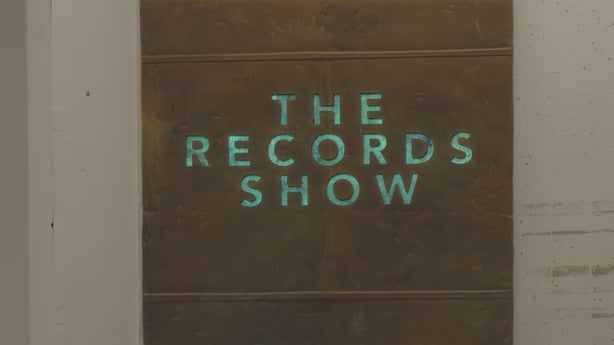In the new RTÉ One series The Records Show, Katie Hannon explores the shelves of Ireland's National Archives, digging out previously undisturbed documents, before heading out across the country to follow the trail of the stories behind them.
Below, NA Director Orlaith McBride explores the work done by the National Archives - take a deeper dive here.
The National Archives preserves the memory of the state. It safeguards Ireland's public records, ensuring their availability as a resource for all.
It was established in 1988 upon the implementation of the National Archives Act, 1986. The National Archives absorbed the responsibilities and assets of two previous offices, namely the State Paper Office (established in 1702) and the Public Record Office of Ireland (founded in 1867).
Once government records are 30 years old, they are transferred to the National Archives, whereupon they are made available to the public. The National Archives holds approximately 50 million records, which tell the story of the evolution of the State and relate to the social, cultural, economic and political history of Ireland, from the Middle Ages through to the establishment of the Irish Free State in 1922 and into the modern era. In addition to records from government sources, the National Archives maintains exceptional private archive holdings.
Watch: Plan your visit to the National Archives
At the heart of the National Archives, the Reading Room is a quiet space where the public can come and explore the treasures of the archives. Reading Room staff are always on hand to provide any assistance needed and the archivist on duty is available to explain the collections and help with search queries.
A number of collections have been digitised and are available to search for free online – explore the fascinating story of the establishment of the Irish State, and the decisions made by its formative leaders by searching through the papers of the first and second Dáil (the Dáil Éireann papers). Or search the 1901 and 1911 Censuses to find out more about local and family histories.

As part of the final chapter in the Decade of Centenaries, the National Archives presented an exhibition, On an equal footing with all: Ireland and the League of Nations, 1923-1946, using records from its collections, at the National Ploughing Championships and the Dublin Festival of History. It was also shown in the Palais des Nations in Geneva, to mark 100 years since Ireland joined the League in September 1923, and will travel to the UN Headquarters in New York in November.
The National Archives is currently working on the conservation, cataloguing and digitisation of the 1926 Census, which will be published on online in April 2026. The 1926 Census was the first census of population of the Irish Free State; it informed Government policy and planning decisions, which affected the lives of millions of people. The National Archives will develop a public engagement programme over the next two years, with exhibitions and events, to help create greater public awareness of the 1926 Census, and what it can tell us about life in Ireland during the early years of the new state.

Records from the National Archives feature in a new RTÉ documentary, The Records Show, and powerfully illustrate a range of stories relating to the development of modern Ireland, including the creation of new symbols of nationhood like coinage and the Irish flag; examples of improvements in housing, infrastructure and public health services; the promotion of the Irish language, international relations; censorship; women's experience and much more besides.
The Records Show airs Sunday at 18:30 on RTE One & RTÉ Player

